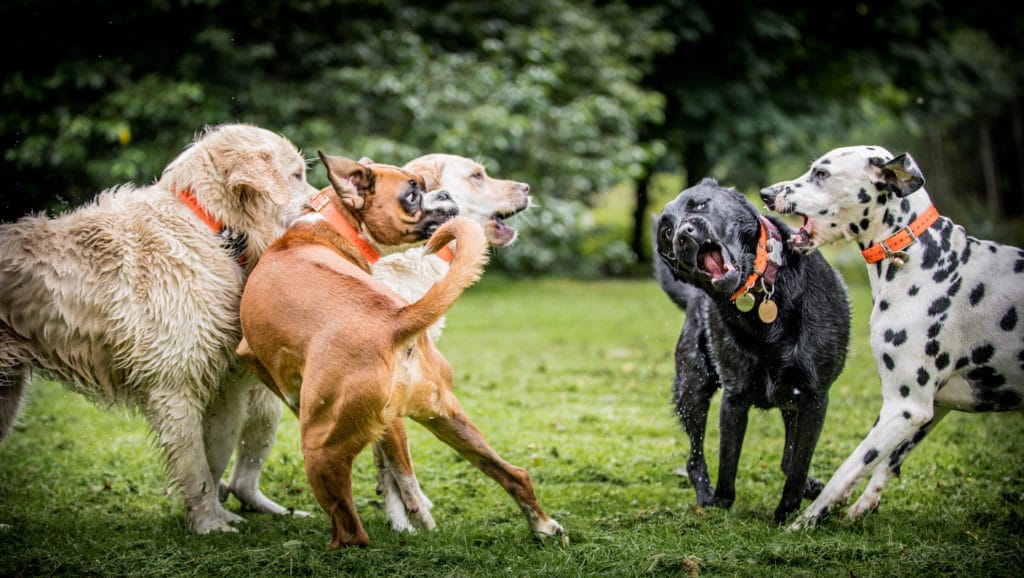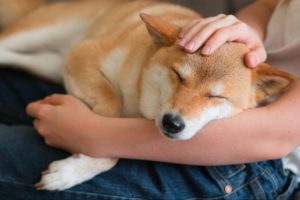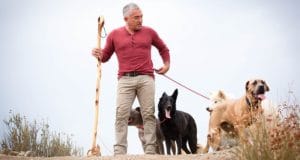By the time a dog is an adult, it knows its pack position instinctively and is not going to change it. This is why you can’t turn a follower into a leader. If you put a dog like that in charge, it will become anxious or fearful because it won’t know what to do.
The Source of Dominance
This position is so instinctual because dogs begin learning it almost from birth as the new litter jockeys for position while nursing with the mother. The more dominant dogs will get more milk while the submissive dogs will learn to wait. Since this first struggle for position deals with food and the possible difference between life and death, it is very primal and makes a big impact.
There are three positions in the pack. Their traditional designations, especially when describing a wolf pack, are alpha, beta, and omega. There is usually one alpha couple, a male and a female, that lead the whole pack. They have a number of betas subservient to them, with the omegas subservient to everyone else.
Cesar describes these positions as being at the front, middle, or rear of the pack. The Pack Leaders, naturally, are in the front. Their job is to protect and direct the entire pack. The omega dogs are at the rear, and their job is to alert the pack to danger. The dogs in the middle of the pack are there to mediate between the front and rear.
Identifying the Leader of the Dog Pack
It’s easy to spot the leader and the omega, because they’ll let you know. The leader will show it in her body language and interactions with other dogs. This is the dog that other dogs approach in the park, and not the other way around. The omega dogs will also let you know, because they will show submission to every dog and every person.
The middle of the pack dogs are trickier to spot because they have their own hierarchy of dominance and submission, and that can even change among them if they’re all at about the same level. So, one day a dog in the middle that seems dominant to most of the other dogs may suddenly be submissive to some of them or to different dogs than usual.
We mentioned before that a dog’s pack position doesn’t change. This behavior isn’t a contradiction because these dogs are still betas. They just negotiate dominance amongst themselves while staying at the same rank.
Dog Pack Hierarchy in the Human Pack
When we bring dogs into our lives, we have to be aware of this pack hierarchy. With one dog, it’s simple. All the humans are Pack Leaders, and the dog is subordinate. But how does it work if you have more than one dog?
In this case, you effectively have two packs. One is the pack of humans and dogs, with all of the humans in charge and all of the dogs subordinate. The other is the pack of dogs, who will have their own hierarchy and they’re going to figure it out long before you do. You’re going to figure it out by watching the signs that the dogs give you.
The Dominant Dog May:
- Push her way to be first in or out of doorways
- Claim the best sleeping area or nudge other dogs out of theirs
- Not give much attention to the other dogs
- Appear to be jealous when you give the other dogs attention
- Mount the other dogs
The Submissive Dogs May:
- Tend to follow behind the other dogs
- Give up his place or toys when the other dog claims them
- Give a lot of attention to the other dogs
- Not sustain eye contact with dogs or humans
- Exhibit submissive urination when excited
The important thing to remember is that you need to honor these pack positions and never try to make the submissive dog dominant or vice versa. This means that the dominant dog always goes first — after all the humans, of course. She gets fed first, gets first choice of toys or treats, gets her leash on for the walk first, and gets attention first.
When You Have Two or More Dogs
If you have more than two dogs, then you need to do these things in pack order — alpha dog first, then the betas, and omegas last. This will reinforce the dog pack hierarchy and make all of your dogs feel confident that they are in their proper place. If the alpha dog begins to feel insecure in his position, then he may compensate for this by exaggerating his dominance, which can lead to aggression.
And remember also that this hierarchal approach does not mean that the omega dog gets less attention or fewer treats than the alpha dog — she just gets them afterwards.
You can’t change a dog’s position in the pack unless you remove all the more or less dominant dogs from that pack. But you can listen to Mother Nature — and your dogs — and use your dogs’ natural pack positions to create balance and harmony by letting them actually be a pack.
How many dogs are in your pack? Do you have any special ways of recognizing their hierarchy? Let us know in the comments!











